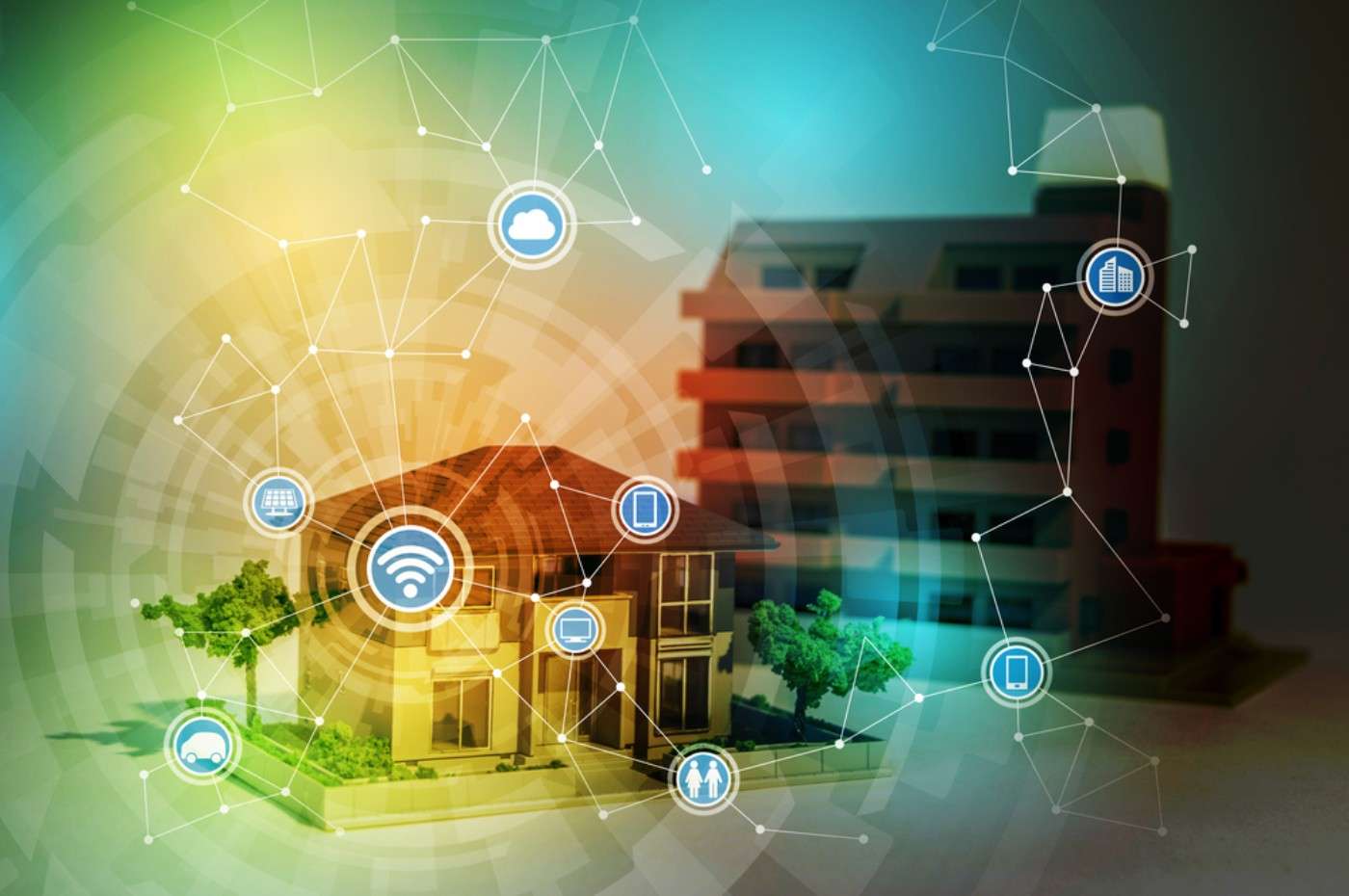
Mesh Wi-Fi offers a seamless Wi-Fi network to every corner of your house or office. While traditional routers transmit Wi-Fi from a single point, mesh networks have a series of access points or nodes spread across your facility. Together, all the dispersed nodes act as a single router to wipe out any Wi-Fi dead spots in your network coverage area.
Contents
Why do we need mesh Wi-Fi?
Picture this: you’ve just subscribed to the latest Wi-Fi hardware and a 100 Mbps internet connection. But still, buffering seems to drag while streaming video in the bedroom. On top of that, everything seems to be set up fine when you talk to your Internet Service Provider (ISP). So what’s the deal?
Chances are you’re stationed at a Wi-Fi blind spot at home. Any physical obstruction between you and the router can result in a sluggish internet reception. For example, doors, interior brick walls, concrete, unusual layouts, or even floors obstruct internet broadcasts. Additionally, traditional router signals may not always reach your gadget if you live in a large space, such as a 3,000 sq. ft. home.
When in proximity, electronic devices such as baby monitors, cordless intercoms, or microwaves can also interfere with internet signals. Mesh Wi-Fi system removes all the network nuances mentioned above and promises a more reliable connection, excellent coverage, and faster speeds.

Mesh Wi-Fi for businesses
Blanketing office premises with Wi-Fi is crucial when setting up a new business or expanding an existing one. However, fragmented networks, spotty connections, and dropped signals created by multiple routers can cost your business immensely. Because losing the internet is losing business.
As you scale your business, your workforce and their workload increase. And as your workspace increases, adding enterprise access points requires many IT resources for installation and maintenance. Traditional Wi-Fi architecture often becomes cumbersome in terms of convenience and cost efficiency.
Wi-Fi mesh networks offer you maximum configurability while working in a self-healing mode. It allows you to roam around the office facility while downloading huge files or having a video conference call. Work without interruptions or slowdowns, even if you’re connected to multiple devices simultaneously.
Mesh Wi-Fi architecture isolates the back-office network from guest traffic and optimizes Wi-Fi performance for everyone while securing critical data. In addition, it gives you more control to configure network performance settings and helps meet your business goals.

How does mesh Wi-Fi work?
In mesh Wi-Fi systems, one main mesh router connects directly to the modem, and a series of nodes, or satellite modules, are placed around your office or house for maximum Wi-Fi coverage. The router and each node tap into the internet service provided through your modem and broadcast it to all Wi-Fi-enabled devices within the facility.
Although the multiple nodes are not linearly connected, they interact independently to share the wireless connection within a larger area. The system algorithm is designed to determine the quickest and shortest route from the main router to your device. Overcrowding is minimized over a single channel as unused channels are detected and used.

What are the pros and cons of mesh Wi-Fi?
Advantages:
Simple setup to manage:
Installation and monitoring of network mesh are super easy as most of them come with user-friendly apps. You can manage your network remotely through the cloud from anywhere and at any time, whether to test the quality, monitor the speed, manage guest networks, add parental controls, and much more.
Easily expandable:
If you want your internet connection to reach a new spot, expanding the coverage is flexible. Adding, rearranging, installing, and configuring nodes ensures a reliable Wi-Fi connection in your desired area.
Aesthetic design:
Traditional routers and extenders look messy over time. Mesh networks cut the clutter and expensive cabling costs and are designed to match your facility decor.

Disadvantage:
Complexity:
The system’s complexity goes up significantly when each node has to send messages and act as a mesh router. Latency, or the time to get a message from a node to the gateway can impact the overall network.
Here are a few features of mesh Wi-Fi
- The IP segmentation feature of mesh Wi-Fi isolates network segments across all wired and wireless interfaces. The main router, all the individual nodes, and any VLAN (if created) are assigned unique SSID and Ethernet ports.
- Mesh Wi-Fi allows you to manage nodes in a centralized or decentralized approach. Both methods are robust, inexpensive, and reliable. Nodes act as routers for peers that are difficult to reach in a single hop from the primary router. Additionally, the routing protocol takes care of any hardware failure. If any node fails out of the network, its neighbors quickly find an alternate route.
- The architecture works with both fixed and mobile devices. Challenging environments such as battlefield surveillance, medical emergencies, tunnels, or high-speed mobile-video applications during travel require diverse solutions. And wireless network mesh is versatile enough to cater to such business needs.
Wi-Fi range extender vs. mesh network: What’s the difference?
Knowing the differences between a Wi-Fi extender and a mesh network system will help you make a calculated decision.

Wi-Fi range extenders only repeat a signal:
They are standalone units wirelessly connected to a primary access point, usually a Wi-Fi router, that extends existing Wi-Fi signal coverage to areas with lousy internet reception. Wi-Fi extenders broadcast with a new network name and relay all traffic back to the Wi-Fi router. So, your Wi-Fi router will show two network names, one from the router and another provided by the extender. On the contrary, a mesh network acts as a single network no matter how many nodes you add.
Wi-Fi extenders may reduce speed:
Wireless links don’t send and receive data simultaneously. As a result, devices connected to the extender often experience slower throughput due to a wireless hop between the router and the Wi-Fi extender.
FAQs
1. Is mesh Wi-Fi better?
Mesh Wi-Fi networks work better, are smarter, and expand wireless coverage more seamlessly than extenders.
2. Does mesh Wi-Fi replace your router?
No, a mesh Wi-Fi system doesn’t replace your router but extends its power to all corners of your house or office.
3. Does mesh Wi-Fi reduce speed?
Mesh Wi-Fi ensures flawless streaming without any buffering as it performs better at managing incoming and outgoing data.
4. Should I switch to mesh Wi-Fi?
If you have a big house or office with multiple dead Wi-Fi zones, then a mesh network is for you.
5. How many devices can a mesh network handle?
If a single router can handle 30 devices, then five nodes in a mesh system can take up to 150 devices.













